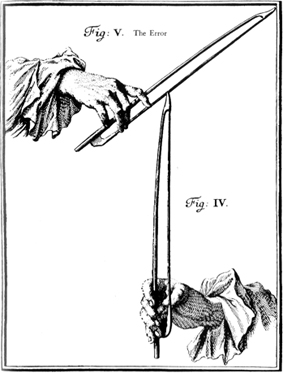
This section is on progress, sharing the questions of some clients and the related answers I hope to provide a start point for objective communication.
Q. [...] Could it be the wooden frog
instead of the ivory frog? What differnce does the material of the frog
make in the sound?
A.In my experience the material gives its color
to the sound, in other words the more compact the material is, the brighter
the sound but, overall, the weight of it works on the balance point.
Q. [...] How does/can one measure "weight-at-the-tip"? You
know, not the actual weight of the bow, but the weight that the player
feels when holding it at the frog.
A. This is usually called "balance", the
more it is far from the frog, the more you feel the bow heavy at the tip
(or heavy at all). It is affected by several elements: first of all the
shape of the tip (massive or thin, slented or high), the weight of the
frog, the presence of of a screw tension device, and last but not least
the thickness graduation of the stick. The balance point moved slowly
from the frog to the tip during two centuries from the early baroque to
the classical and romantic period.
Q. [...] do you have/use different qualities/densities of [...]wood
? how do you decide to use which wood?
A. The right answer is "just feeling".
A general rule, anyway, is that treble instruments need bows made from
high densyty woods and bass instruments need the opposite, An accurate
use of materials can be helpful to correct the sound of instruments, fthe
"dark" sound of a violin can be "cleared" by a very
dense bow and viceversa. The hair works in the same direction too.
Q. In terms of hardness, I'm really confused. [...] what do we mean
when we say "hardness", "stiffness", "flexibility",
"elasticity"? Is this more a function of design or of materials?
A. [...] Elasticity is usually intended as the property
of a material to return in its original condition when
stops the force that modified it.
Stiffness indicates the amount of force you need to modifie that condition,
it depends either on material and on shape.
Flexibility is the opposite of stiffness and depends on materials and
shape too. Very important in bowmaking is "where" stiffness
and flexibility are. The graduation of thickness of a stick, the spring
(or "Cambre") and the fluting are the most significant factors.

Personals: presentation , contact -- Research: reconstruction , bows database , glossary ,fretboard calculator -- iconography -- workshop: friends , the staff , services -- links -- news --- works: Violin family bows --- Viol family bows --